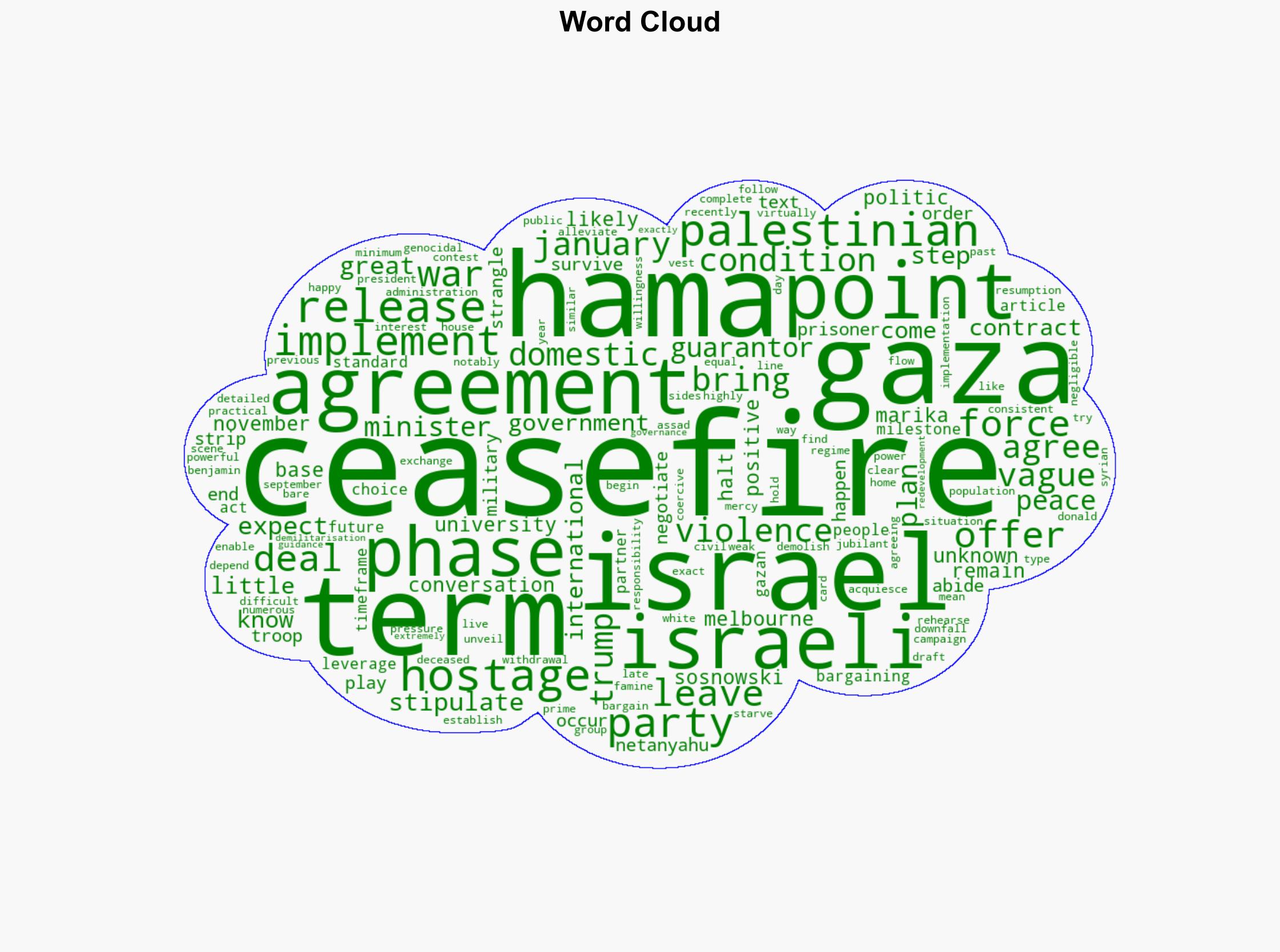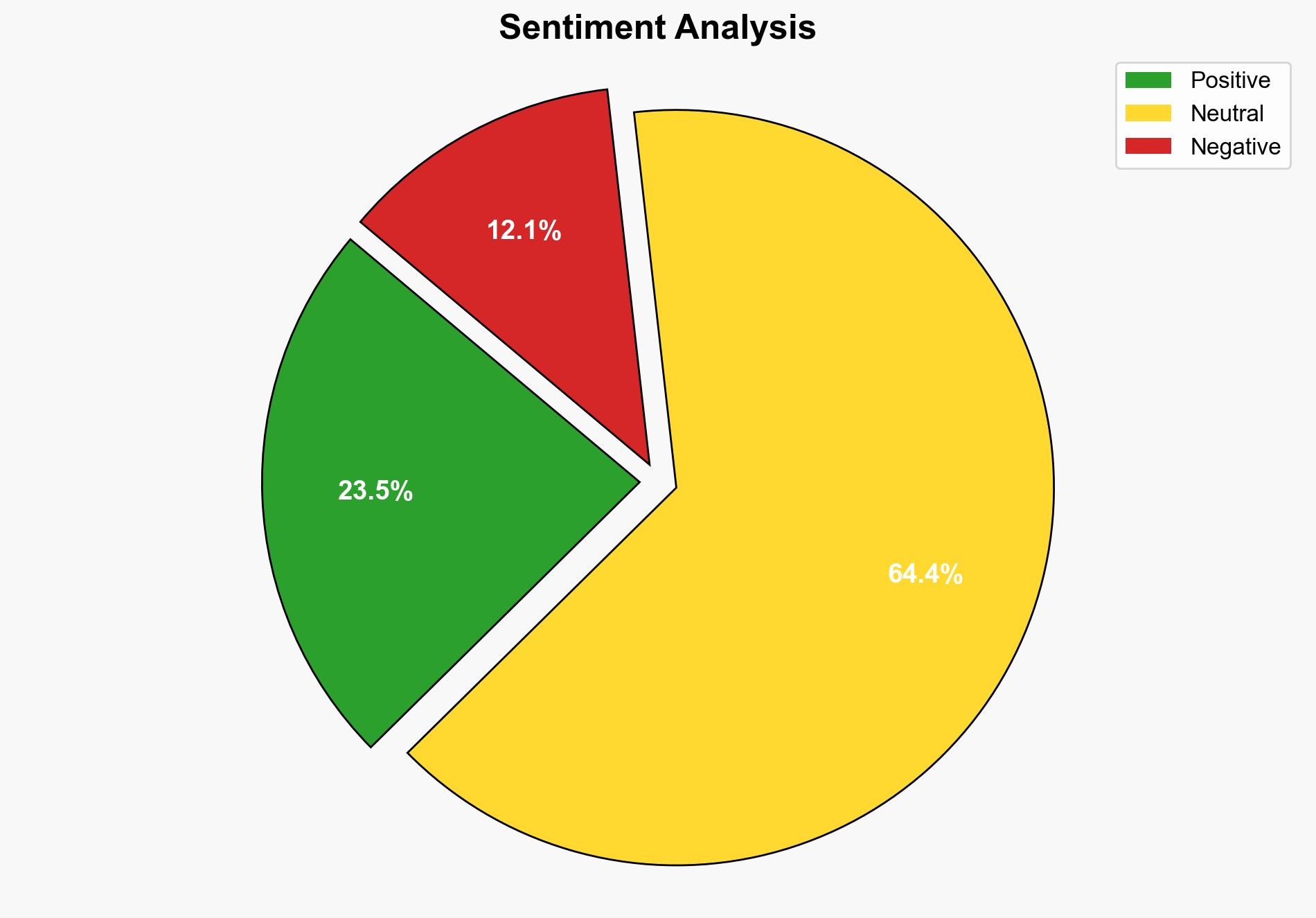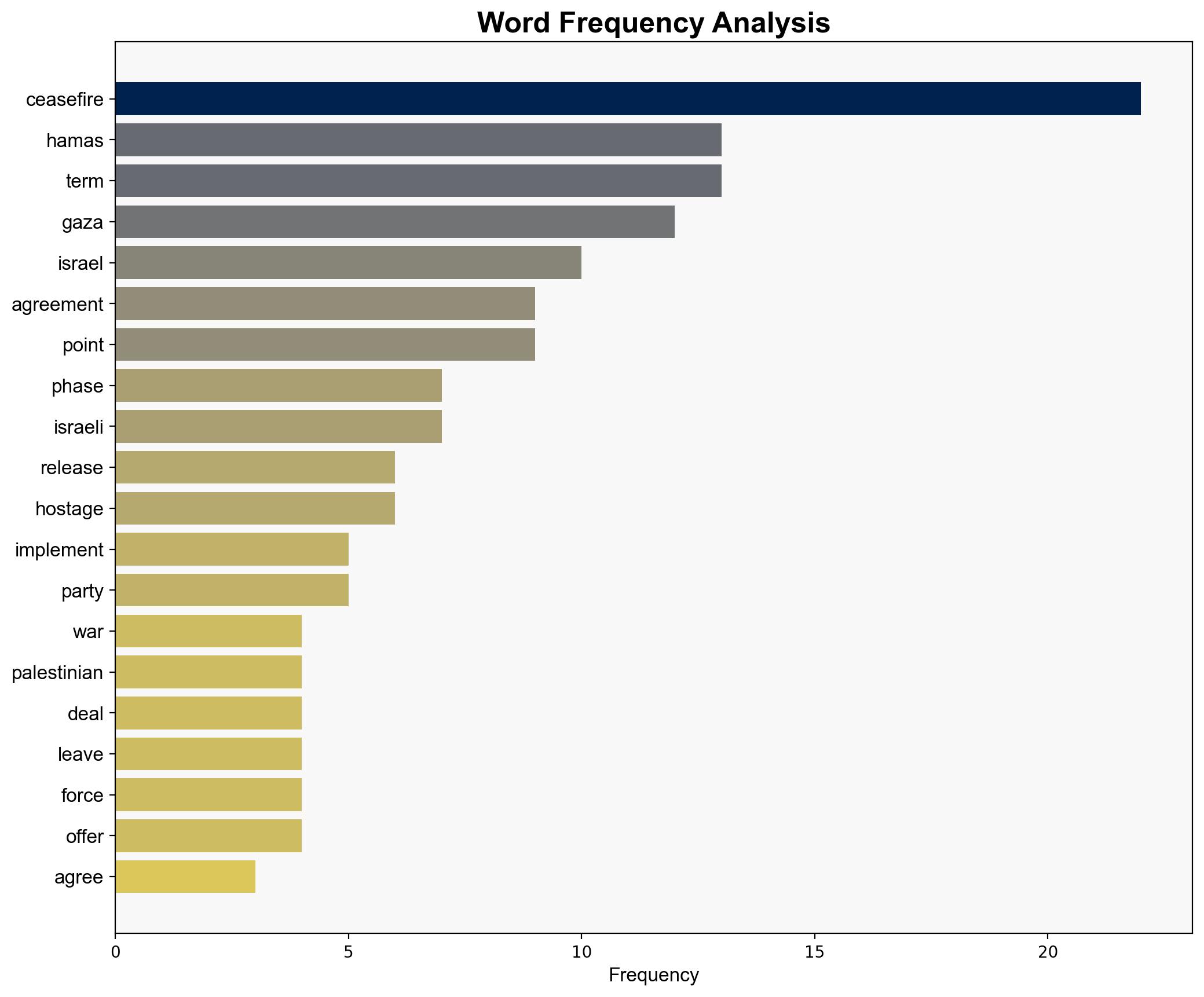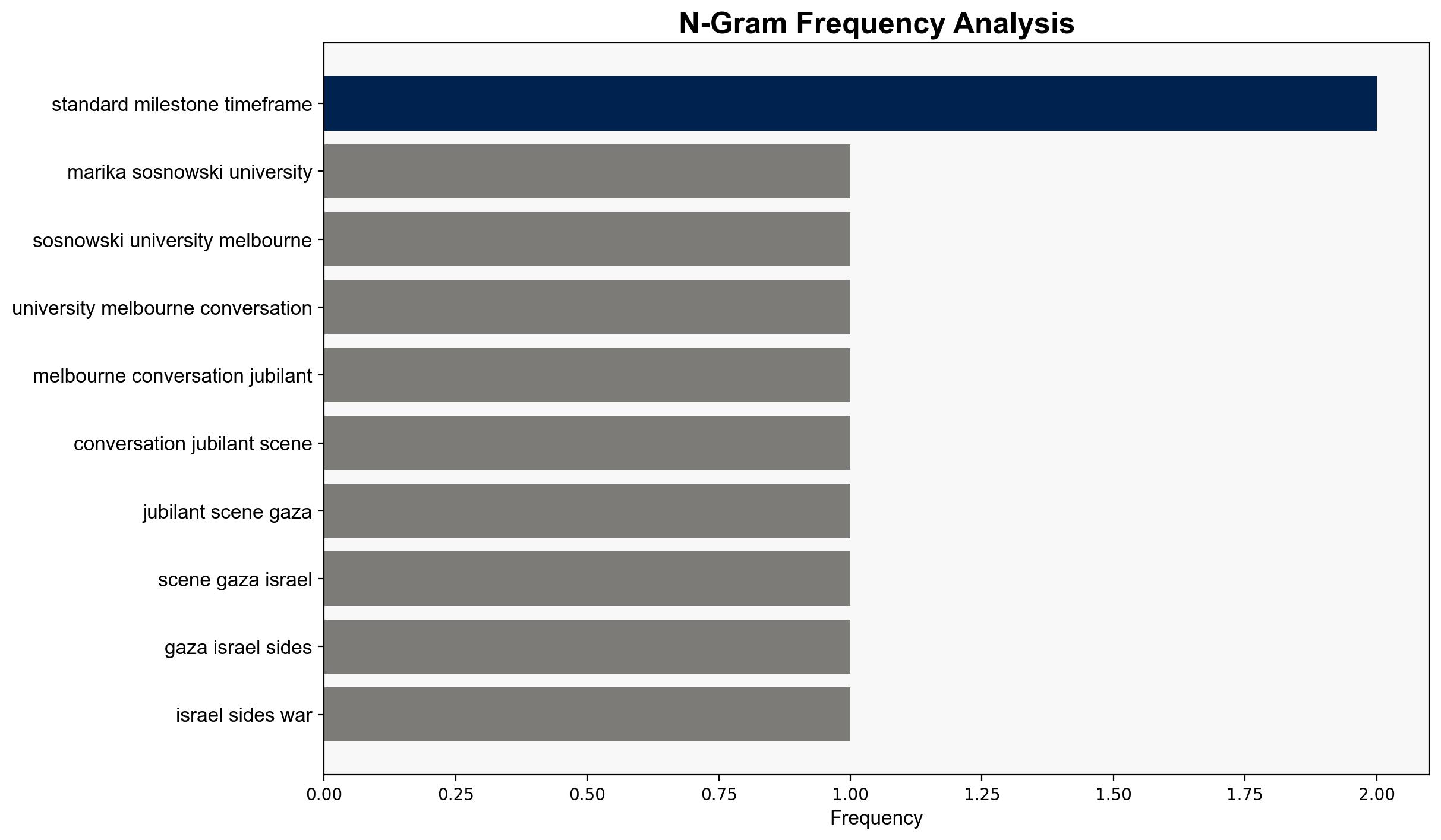The Gaza ceasefire Deal could be a Strangle Contract with Israel holding all the Cards – Juancole.com
Published on: 2025-10-16
Intelligence Report: The Gaza ceasefire Deal could be a Strangle Contract with Israel holding all the Cards – Juancole.com
1. BLUF (Bottom Line Up Front)
The most supported hypothesis is that the Gaza ceasefire agreement functions as a “strangle contract,” heavily favoring Israel and limiting Hamas’s leverage. This conclusion is drawn with a moderate confidence level due to the vague terms and historical context of similar agreements. Strategic recommendation includes monitoring the implementation closely and preparing for potential non-compliance scenarios.
2. Competing Hypotheses
1. **Hypothesis 1**: The ceasefire agreement is a “strangle contract” that disproportionately benefits Israel, providing it with significant political and military leverage over Hamas.
2. **Hypothesis 2**: The ceasefire is a balanced agreement aimed at stabilizing the region, with both parties having incentives to comply due to international pressure and humanitarian needs.
Using ACH 2.0, Hypothesis 1 is better supported due to the historical pattern of vague terms in agreements that favor Israel, the current political climate, and the lack of substantial bargaining power for Hamas.
3. Key Assumptions and Red Flags
– **Assumptions**: It is assumed that Israel’s military and political strategies are primarily focused on maintaining control over Gaza. Another assumption is that Hamas lacks significant international support to alter the terms.
– **Red Flags**: The vagueness of the ceasefire terms and the historical precedent of similar agreements failing raise concerns about the true intentions behind the deal.
– **Blind Spots**: Potential shifts in international diplomatic stances or unexpected internal political changes in Israel or Gaza could alter the dynamics.
4. Implications and Strategic Risks
– **Patterns**: The pattern of coercive agreements suggests a continued cycle of conflict and temporary ceasefires.
– **Cascading Threats**: Failure of the ceasefire could lead to renewed hostilities, increased humanitarian crises, and regional instability.
– **Potential Escalation**: If the ceasefire terms are perceived as unfair, it may provoke further radicalization within Gaza or lead to international condemnation of Israel.
5. Recommendations and Outlook
- **Mitigation**: Engage in diplomatic efforts to clarify and enforce the terms of the ceasefire, ensuring transparency and accountability.
- **Exploitation**: Utilize international platforms to advocate for humanitarian aid and reconstruction efforts in Gaza.
- **Scenario Projections**:
– **Best Case**: Successful implementation leads to long-term peace negotiations.
– **Worst Case**: Breakdown of the ceasefire results in intensified conflict.
– **Most Likely**: Temporary peace with underlying tensions persisting.
6. Key Individuals and Entities
– **Donald Trump**: Former U.S. President, associated with the peace plan.
– **Benjamin Netanyahu**: Israeli Prime Minister during the unveiling of the peace plan.
– **Hamas**: Palestinian organization in Gaza, central to the ceasefire agreement.
7. Thematic Tags
national security threats, regional focus, geopolitical stability, conflict resolution





